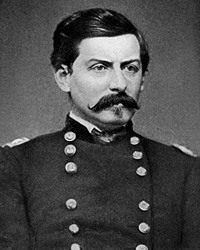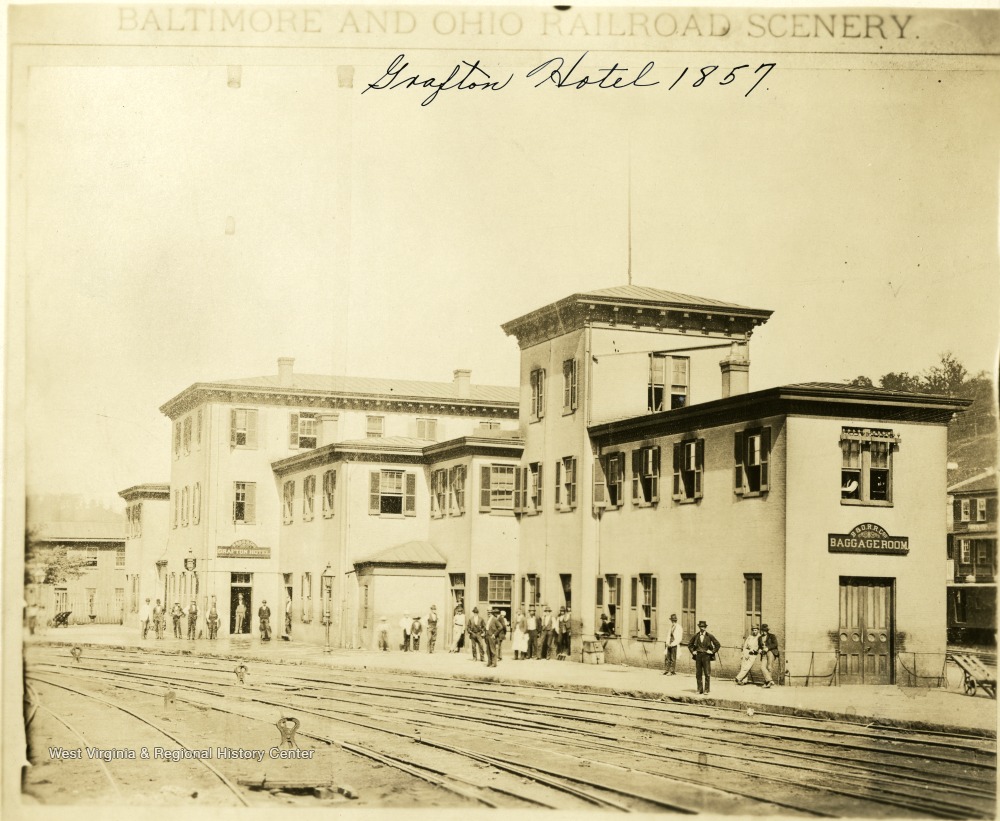Western Virginia Confederate Cocktails
 I’ve probably said it here in a past post, but in working on my next book I’ve spent quite a bit of time with the papers of George B. McClellan, which were digitized several years ago at the Library of Congress. These papers offer a wealth of untapped information on McClellan’s early war period (May – June 1861) in Ohio and western Virginia, including telegrams, orders, and personal correspondence.
I’ve probably said it here in a past post, but in working on my next book I’ve spent quite a bit of time with the papers of George B. McClellan, which were digitized several years ago at the Library of Congress. These papers offer a wealth of untapped information on McClellan’s early war period (May – June 1861) in Ohio and western Virginia, including telegrams, orders, and personal correspondence.
Believe it or not, the best place to find Confederate orders and correspondence from western Virginia during this same period is also the in papers of George B. McClellan! Papers captured in June 1861 from colonels George A. Porterfield and William J. Willey at Philippi, and from Maj. Alonzo J. Loring at Wheeling were forwarded to McClellan, outlining Confederate strength, disposition, supplies, and logistics. The correspondence proved a gold mine of information as McClellan ramped up federal forces in western Virginia prior to the push on Rich Mountain, Laurel Hill, and the Kanawha Valley.
Other papers and prizes of war were captured by the Union volunteers advancing into western Virginia along the Baltimore & Ohio and Northwestern Virginia railroads. Some were forwarded to their respective officers, while others were sent home as trophies, or even published in local newspapers.

On May 29, 1861, as Union troops from Virginia, Ohio, and Indiana pushed into the interior of northwestern Virginia, Confederate troops in and around Grafton retreated fifteen miles south to Philippi, the seat of Barbour County. Union troops occupied the strategic rail hub at Grafton the following day, finding much left behind in the local hotels and boarding houses. The guest register at the Grafton Hotel revealed the names of numerous officers of the Virginia “Provisional Army,” along with notations of “not paid,” for those who left town before settling their bill.
Also discovered at the hotel were Confederate papers and muster rolls, as well as the recipes for two mixed drinks apparently favored by the Confederates in Grafton. Col. Benjamin F. Kelley of the 1st Virginia (US) allowed his aide, Henry H. Hornbrook, to publish the recipes in the Daily Intelligencer newspaper. Hornbrook noted that the Confederates perhaps…
“spent more time in mixing and drinking hot apple toddy and hot whiskey punches, than they did in drilling. A more mean, despised and God forsaken rabble never cursed a place, than the rebel army which occupied this town…”
Before the weather turns decidedly warmer during spring and summer, I thought our readers might like to try their hand at these early war recipes. Let us know how they turn out!
Hot Apple Toddy:
1st – Hot roasted apple
2nd – Sugar, 1 tablespoon
3rd – Brandy
4th – Hot water
5th – Nutmeg
(Note: This is a slight variation of any hot apple toddy you might order at a bar today, with modern recipes favoring whiskey or bourbon over brandy, honey and lemon over sugar, and cinnamon over nutmeg.)
1st – Hot water
2nd – Lemon rind
3rd – Sugar
4th – Scotch whiskey, 1 wine glass
(Note: Again, the only variation is in modern recipes preferring honey over sugar.)

Interesting post. Thank you. The drinks look tempting but, showing my mixological [sp?] ignorance, with respect to the Hot Apple Toddy recipe, exactly what do you do with the hot roasted apple? Cut it up for the glass, pulp it?
I’ll definitely be trying this. Thanks, JE!